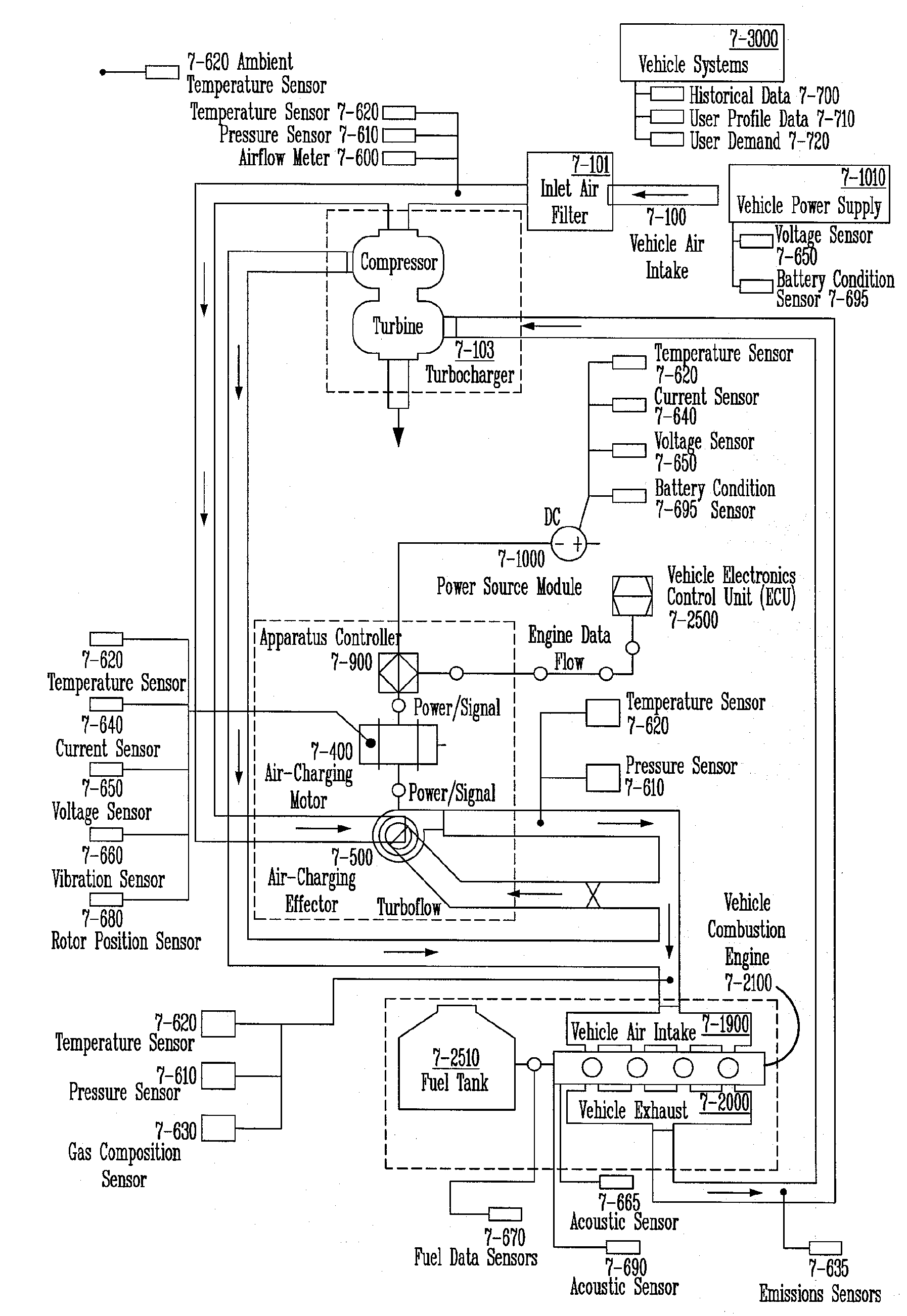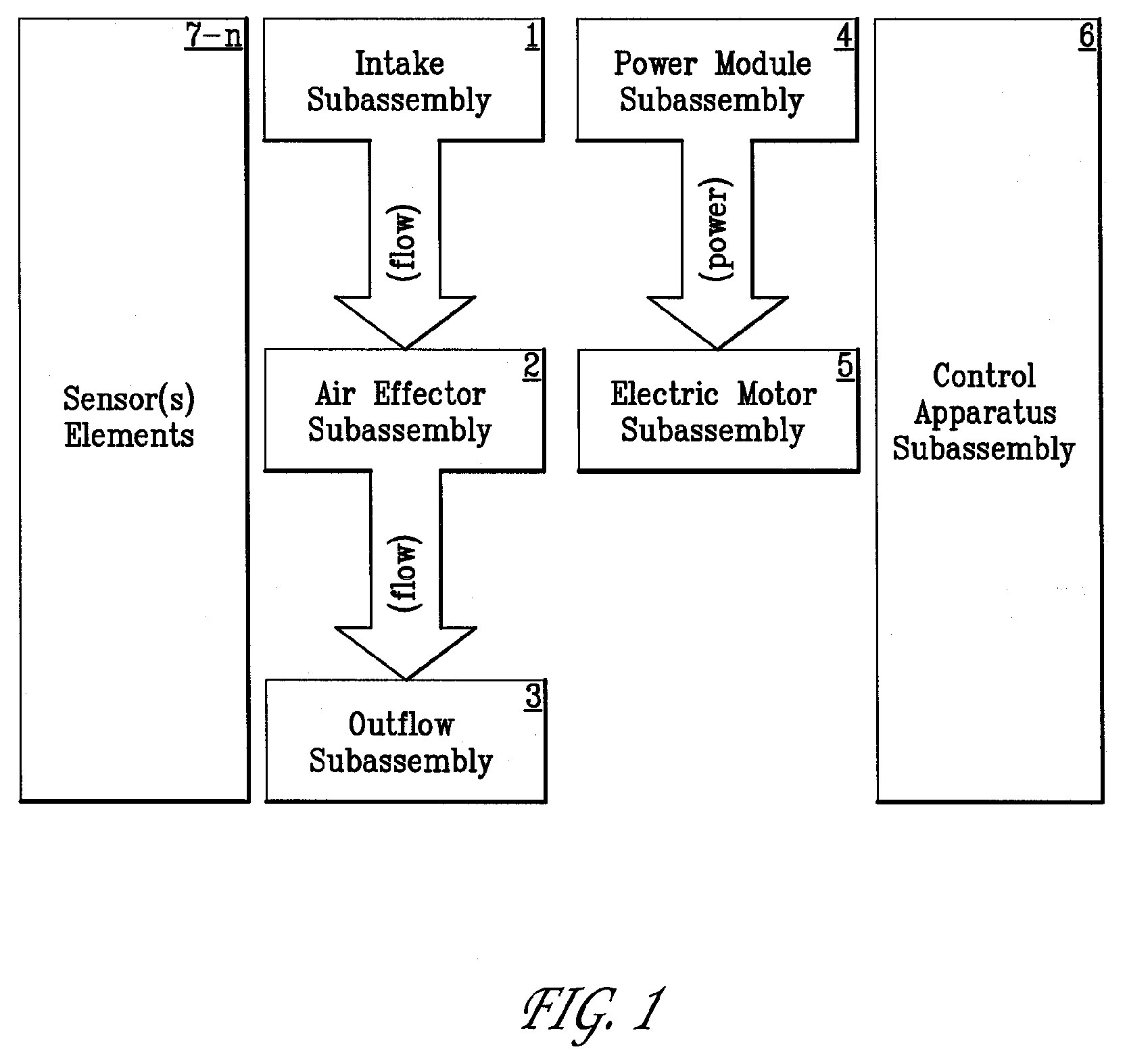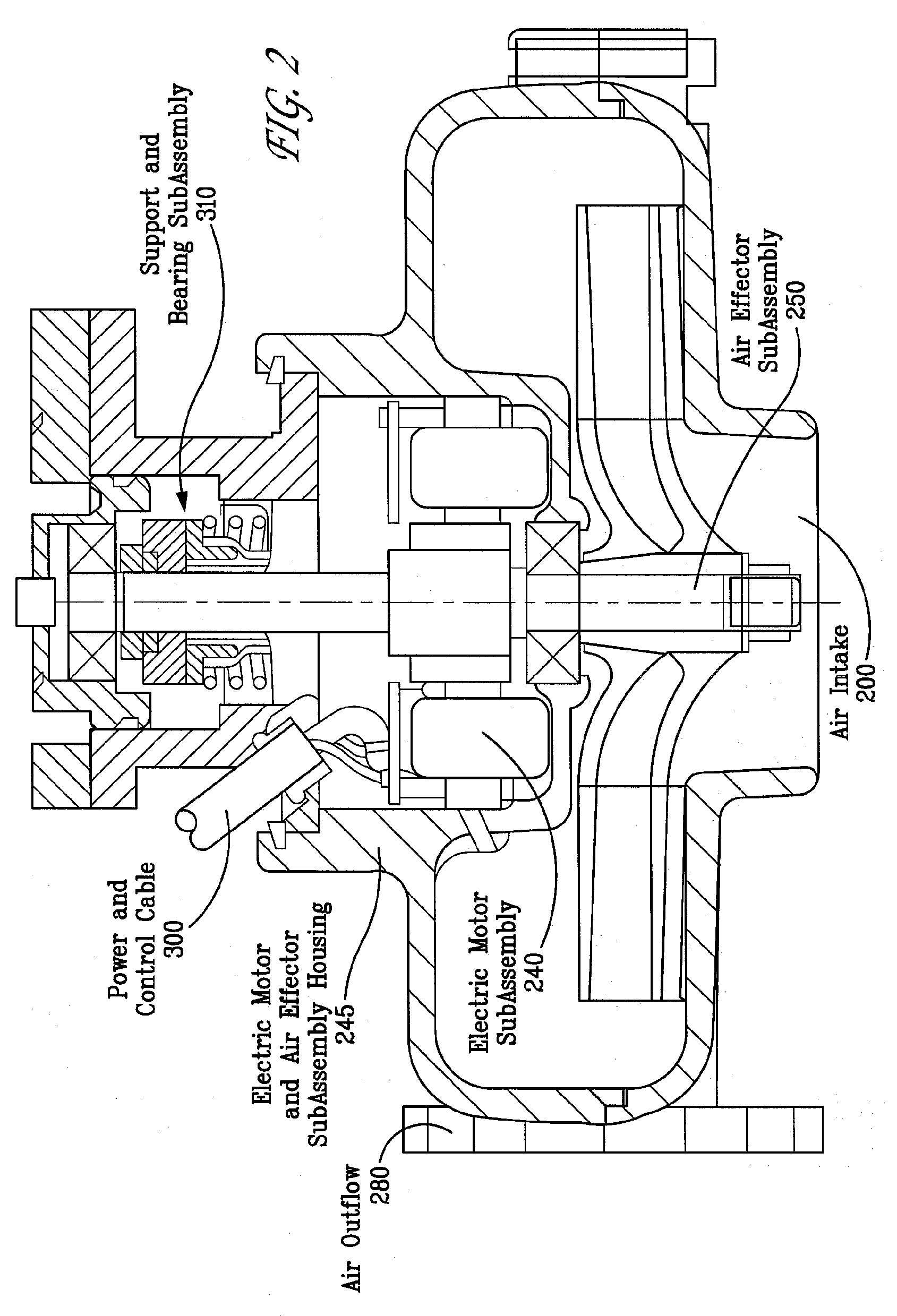Generation and Management of Mass Air Flow
a mass air flow and air technology, applied in the direction of electrical control, piston pumps, hybrid vehicles, etc., can solve the problems of reducing the serviceability of air charging devices, existing devices failing to provide the necessary control feedback, existing devices failing to provide sufficient mass air flow, etc., to achieve high speed, efficient power consumption, and compatibility with operating environments
- Summary
- Abstract
- Description
- Claims
- Application Information
AI Technical Summary
Benefits of technology
Problems solved by technology
Method used
Image
Examples
Embodiment Construction
[0102]The present invention includes embodiments of systems and methods for the generation of high velocity mass air flows, or designed air flows, for use in the combustion elements of a hybrid combustion-electric vehicle.
[0103]The present invention includes embodiments of systems and methods for the generation of high velocity mass air flows, or designed air flows, for use in the combustion support elements of a hybrid combustion-electric vehicle.
[0104]The present invention also includes embodiments of systems and methods for the generation of high velocity mass air flows, or designed air flows, for use in the electrical elements of a hybrid combustion-electric vehicle for cooling applications.
[0105]The present invention also includes several exemplary embodiments of systems and methods for the generation of high velocity mass air flows, or designed air flows, for use in the electrical elements of a hybrid combustion-electric vehicle for heating applications.
[0106]Also, the present...
PUM
 Login to View More
Login to View More Abstract
Description
Claims
Application Information
 Login to View More
Login to View More - R&D
- Intellectual Property
- Life Sciences
- Materials
- Tech Scout
- Unparalleled Data Quality
- Higher Quality Content
- 60% Fewer Hallucinations
Browse by: Latest US Patents, China's latest patents, Technical Efficacy Thesaurus, Application Domain, Technology Topic, Popular Technical Reports.
© 2025 PatSnap. All rights reserved.Legal|Privacy policy|Modern Slavery Act Transparency Statement|Sitemap|About US| Contact US: help@patsnap.com



